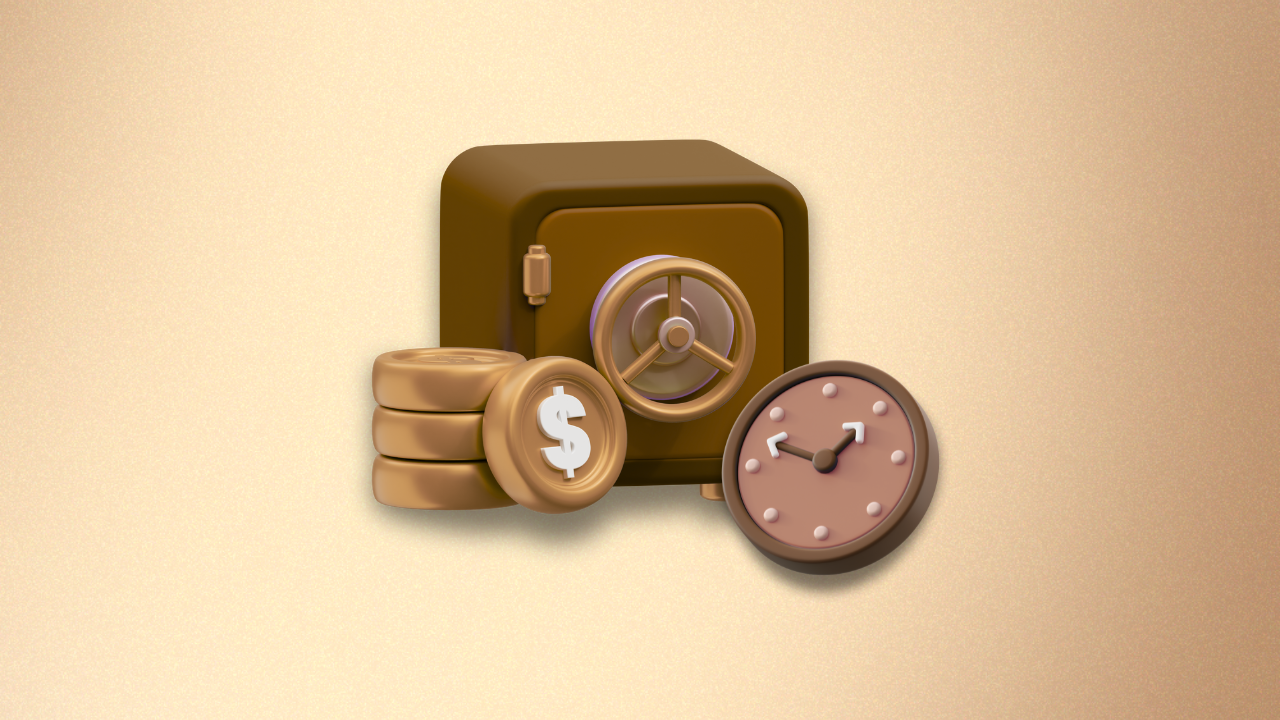As per the RBI data as of march 2023, 90% of the assets in short-term FDs are owned by businesses, which accounts for more than $200 billion. On the other hand, in FDs which have tenure over the year, the majority of the total assets were owned by individuals.
This clearly states that businesses are only using FDs for their short-term cash management. But why?
In today’s KOFFi break, we will understand why short-term FDs are too popular within businesses for their short-term cash management. How this is a huge blunder businesses were making, where these businesses bear massive opportunity costs without even knowing.
Let’s start with Understanding What are Short-Term FDs?
Short-term FDs are just similar to regular bank fixed deposits, offered by banks and financial institutions that allow individuals and businesses to deposit money for a relatively shorter duration than regular bank fixed deposits, typically ranging from a few weeks to several months.
Any funds kept for below 6 months are called short-term fund parking. Generally, short-term FDs have a tenure between 1-6 months. Which seems perfect for businesses for their short-term fund parking.
Why do Businesses need Short-Term Fund Parking Avenues?
While the majority of businesses in sectors like retail and manufacturing are cash-strapped, SMEs in the service sector often find themselves with surplus funds. This surplus can be periodic, such as payroll funds sitting idle until the end of the month, or collected GST tax which need to be submitted within one to three months.
Such funds often get mixed up with daily operational cash, making it challenging for businesses to segregate and organize them for better financial hygiene.
As a result, businesses often resort to creating short-term FDs. Which helps them segregate funds for their short-term business goals while earning some returns.
Let’s Understand What Businesses Think: How Short-Term FDs were Beneficial to them
- Safety: Short-term FDs are considered to be the safest instrument as they are not subject to market volatility and are backed by deposit insurance guarantees provided by the government.
- Fixed returns: Short-term FDs provide fixed returns, offering certainty and stability to the deposits.
- Duration: Short-term FDs generally come with a duration between 1-2 months which is idle for businesses to manage their short-term fund parking.
That’s great! But then what’s wrong with the short-term FDs, how do businesses lose on the opportunity cost with short-term FDs, whereas it seems a very good option for short-term fund parking?
To understand that…
You need to Understand the Actual Reality of the Short Term FDs
Besides safety, fixed returns, and duration, there are tons of short-term FD drawbacks:
- Low returns: Fixed deposit interest rates generally depend on the tenure, in simple words, the longer the tenure higher the interest rates. Thus, due to shorter tenure the interest rates we get are very low.
- Reduced tax benefits: Unlike savings accounts, where you can receive up to Rs 10,000/- in tax deduction under 80 TTA for interest income, short-term FDs do not offer such benefits.
- Liquidity constraints: While short-term FDs provide you liquidity to withdraw anytime, banks charge you one premature penalty which reduces overall against, which limits the flexibility of accessing funds when needed.
- Inflation: The returns from the short-term FDs are so low that they couldn’t even break inflation. This is a direct loss for businesses that they can’t even manage to retain their fund’s value.
- Difficulty in use: Every time businesses need to park their short-term funds, they need to create new FDs in their banks, and the same for withdrawing funds every time they need to break their FD. Which is difficult to manage.
- Opportunity cost: Opting for short-term FDs with money limitations may result in missed opportunities for more idle financial instruments.
These were the serious drawbacks. But then…
Why do Businesses go for the Short-Term FDs for their Funds?
The answer is simple, due to lack of awareness. Businesses in India are not aware of the other financial options than traditional banking ones.
Corporations, with plenty of financial resources, prefer using alternatives like money market securities for their fund parking needs. However, due to a lack of knowledge and awareness, SMEs often stick to traditional bank options like fixed deposits, which help them with at least some return.
Also, the ignorance of Indian fintech on businesses is a major issue. The number of changes we’ve seen in consumer fintech in the last 10 years hasn’t translated to the B2B side at all.
As a consumer, how I buy insurance, manage my bills, make my payments, and get credit has changed massively in the last 10 years, but it’s still the same as a business owner.
If you as a business owner want to buy the insurance you have to call your broker, if you’re going to park your funds you still have to call the bank. The whole process is still an old-school mechanism that has been operating and that needs to change.
Indian businesses need more education and tailored fintech solutions. They can benefit from adopting the strategies of Indian corporations in managing short-term funds.
What are the other Short-Term Fund Parking Avenues used by Indian Corporates?
SMEs businesses can learn from Indian corporates what are the various other short-term fund parking avenues they use to optimise their short-term funds. Here are some of them:
- Money Market Funds: These are debt funds that are invested in money market instruments like bonds, commercial papers, T-bills, certificates of deposits, etc which have high liquidity.
- Arbitrage Funds: These are the hybrid funds that take advantage of price differences of assets in different markets primarily cash and derivative markets. These are very low-risk instruments with high liquidity and better returns.
- Gilt Funds: These are debt funds that invest in only government securities such as bonds which are issued by state governments or central governments. These are low-risk funds that offer moderate returns compared to equity funds.
- Short-Term Debt Funds: These are debt funds that invest primarily in debt instruments with a shorter maturity period, typically ranging from 1 to 3 years. These are low-risk investments with moderate returns
- Corporate Bond Funds: These are the debt funds that invest at least 80% of their assets in high-quality corporate bonds, which typically have a rating of AA+ or above. These are very low risk instruments with better returns.
Final Thoughts:
Not every business is cash-strapped. In fact, the amount of money parked in short-term deposits by businesses provides insight into their saving needs.
These businesses need to be smart with their parked funds and educate themselves about other ideal instruments that can generate additional passive income safely and offer added flexibility.
Did you find this information valuable? Share this blog with someone who uses short-term FDs to park their business’s short-term funds. Help them make informed financial decisions just as you do!
Don’t forget to subscribe to our blog for more valuable insights.
Was this helpful?
Click on a star to rate it!
As you found this post useful...
Follow us on social media!
We are sorry that this post was not useful for you!
Let us improve this post!
Tell us how we can improve this post?






 Ask us Anything!
Ask us Anything!